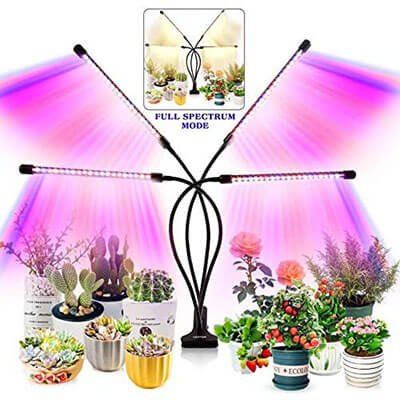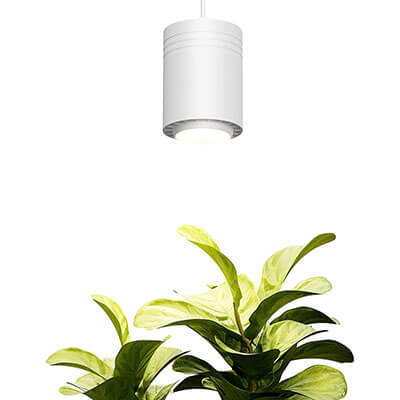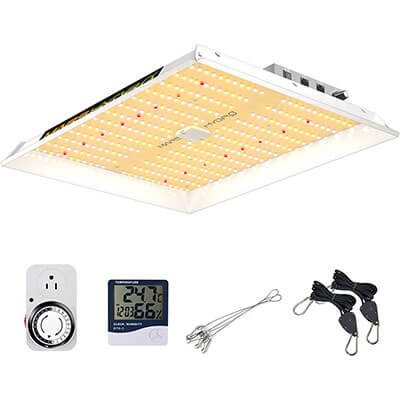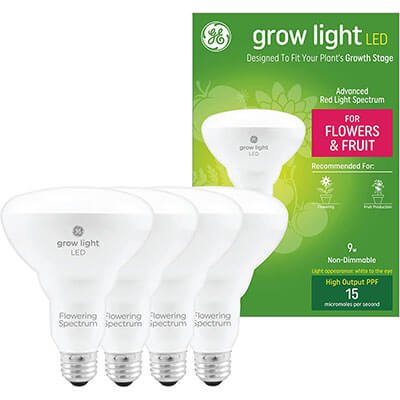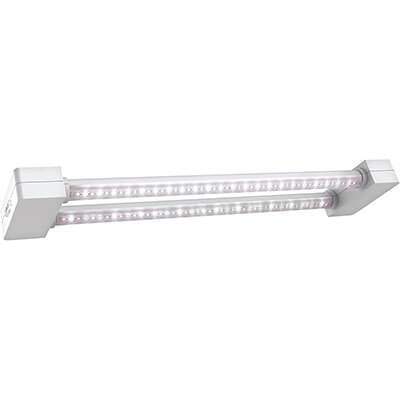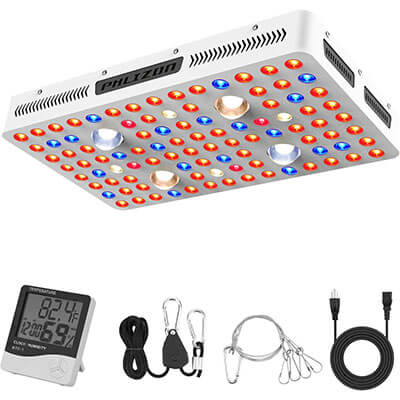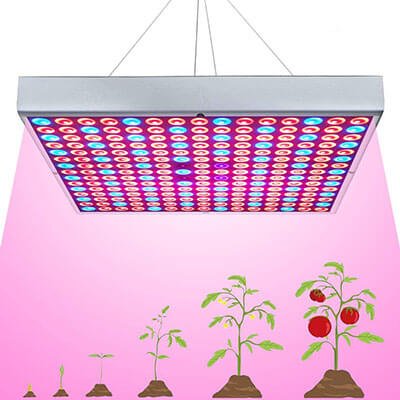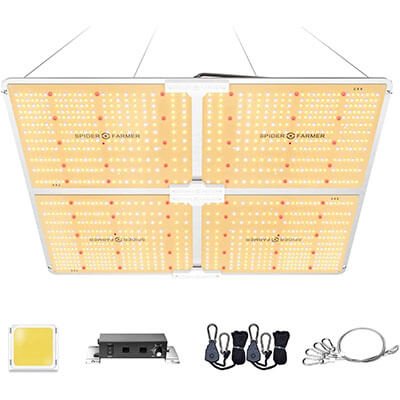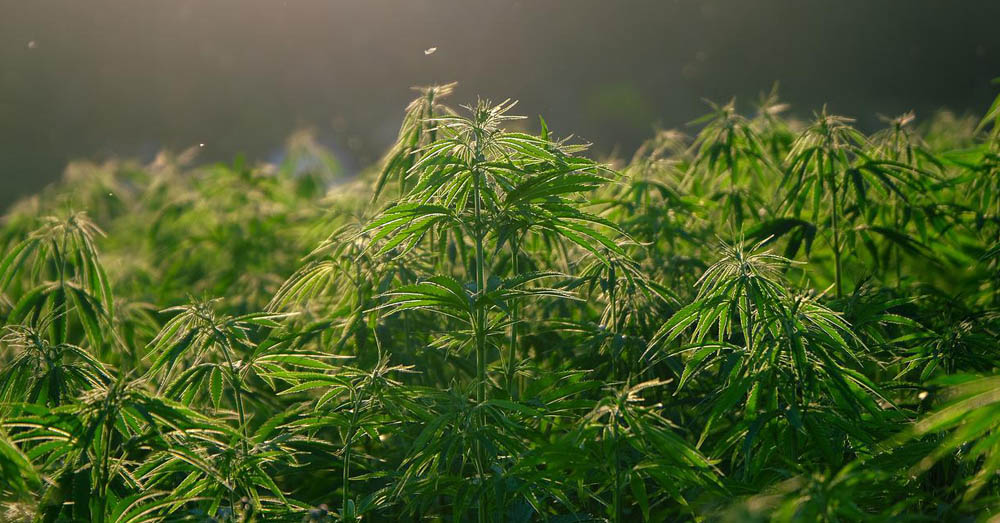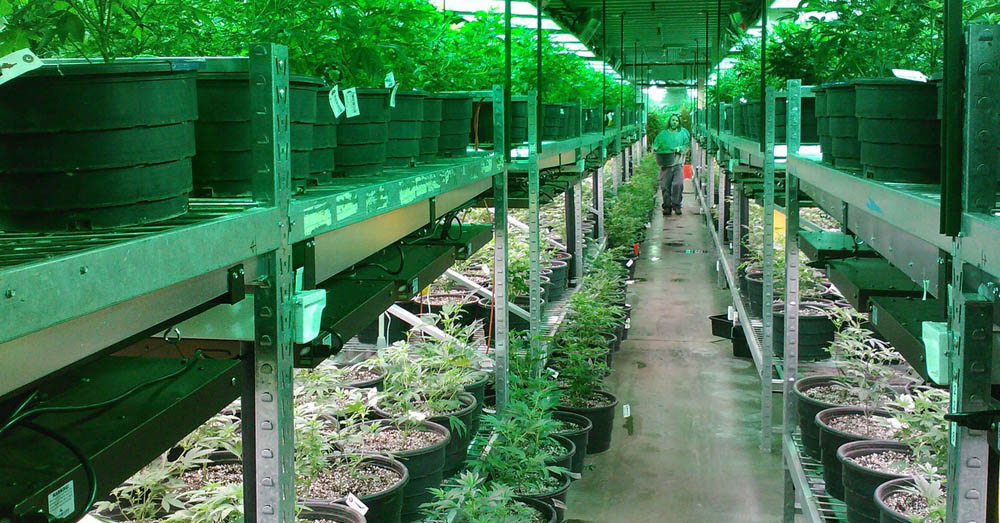LED grow lights are excellent tools for your home garden, whether you’re an expert or a beginner learning how to grow your plants.
Many home gardeners prefer light-emitting diode (LED) grow lights because they are eco-friendly, economical, and capable of producing full-spectrum light.
Given the wide range of alternatives on the grow light market, choosing the finest LED grow lights for your indoor garden may be difficult.
So, I researched the best LED grow lights online and tried a few. For more information on selecting the best LED grow lights for your home, continue reading!
What Are LED Grow Lights?
A form of lighting called LED (light emitting diodes) grow lights are made specifically to support plant growth.
They produce visible light at specific wavelengths advantageous for photosynthesis, the process by which plants convert light energy into chemical energy.
LED grow lights are mostly used in hydroponics and indoor gardens to set a climate where photosynthesis occurs with top efficiency.
LED grow lights have different spectrums and intensities that can be changed to match your plants’ requirements.
They are simple for indoor garden systems, such as grow tents and offer an effective solution to replace or supplement natural sunlight to help your plants grow, including marijuana.
To maintain healthy growth when growing cannabis, it’s critical to supply the proper light. See here for the top cannabis grow tents.
NOTE: LEDs have a much longer life span and are more energy-efficient than fluorescent bulbs. Most LED grow lights have full-spectrum bulbs, giving off cool and warm light to replicate natural sunlight.
The 10 Best LED Grow Lights to Get
The ten best LED grow lights for indoor growers are currently listed below.
1) VIVOSUN AeroLight LED Grow Light
Specifications:
- Dimension (inch): 13 x 13
- Light Source: LED
- Input Power: 100W
- Power Source: Corded Electric
- Features: Programmable and adjustable
A longtime expert in indoor gardening, VIVOSUN, has unveiled what I believe to be one of the greatest LED grow lights for growing cannabis.
In the picture above, a 400-watt AeroLight unit that illuminates a 4 by 4 foot growth space is created by connecting a kit of four 100-watt AeroLight units.
The best qualities are the fan in the center of the grow light’s distinctive design and full spectrum lights, including infrared and ultraviolet LEDs.
The presence of infrared and ultraviolet diodes on a grow lamp is unusual, especially on a smaller model like this one.
This LED grow light kit includes a controller that can link your fan and an LED grow light to your smartphone as an additional feature.
For growing cannabis and other plants, Vivosun grow lights offer just the right amount of light. You can check a more in-depth review of Vivosun grow lights here.

PROS
- Integrated the smart app into a larger light system
- Great for hydroponic systems or microgreen flats
- It comes with a display
- A circulation fan is built into each unit
- Have their timers

CONS
- Costly
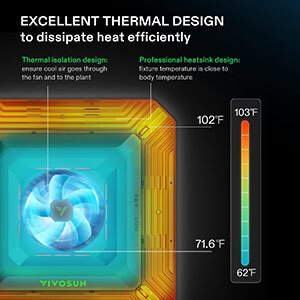
Rating: 4.8/5
2) Horticulture Lighting Group (HLG) Blackbird
Specifications:
- Dimension (inch): 26 x 26.75 x 2.75
- Light Source: LED
- Input Power: 100 – 600 watts
- Power Source: Corded Electric
- Features: High efficiency and dimmable
The HLG Blackbird is an innovative design by HLG that combines numerous QB quantum board lights into a single object.
When you start installing LED grow lights in smaller spaces, such as 4 by 4 feet and below, you will see a significant change.
This LED grow light can generate an excellent light spectrum to help your plants grow from seedling to harvest.
With this grow light’s power, your plants will flower from a hanging height up to three feet above! Its power is that great.
You can drop it even further if you want to raise the PPFD’s (photosynthetic photon flux density) range for better yields.
The notable aspect is that unlike lower-quality grow lights, the light intensity does not significantly decrease as it approaches the tent’s edges.
For a 4 by 4 foot grow room, the HLG Blackbird is not the cheapest LED grow light. But in terms of performance, it’s one of the greatest.

PROS
- Already assembled
- It is very well built.
- Dimmer will go from 0 to 100%
- The best-LED light for a 4×4 tent
- Better canopy penetration

CONS
- Might be heavy
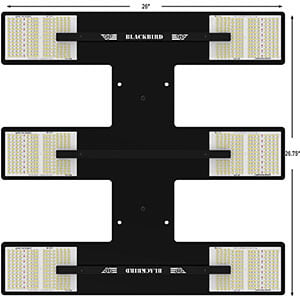
Rating: 4.8/5
3) LEOTER Grow Light for Indoor Plants
Specifications:
- Dimension (inch): 13.66 x 5.87 x 3.35
- Light Source: LED
- Input Power: 40 Watts
- Power Source: AC
- Features: Best Red/Blue/Yellow Spectrum LED Combination
The LEOTER LED Grow Light emits a complete color spectrum to promote different stages of plant growth.
It has a complete spectrum emission range of 380 nm to 800 nm, emitting 660 nm red light and 460 nm blue light. The greatest growth benefits come from combining all three.
Beginners who want to experiment with LED grow lights will value the reasonable cost and outstanding performance of this LEOTER choice.
Ten dimmable modes and three light-spectrum options are available for users to test to determine which setting is ideal for their plants.
It has a timer, so users don’t have to worry about manually turning the light off; they can set it up for 3, 9, or 12 hours at a time.
It has four light heads and four flexible gooseneck arms that can be adjusted by 360 degrees.

PROS
- Three different light modes
- Includes aluminum heat sink
- Integrated timer
- Flexible gooseneck arms
- Power from a regular outlet or USB port

CONS
- No warranty details
- Burns out after several months
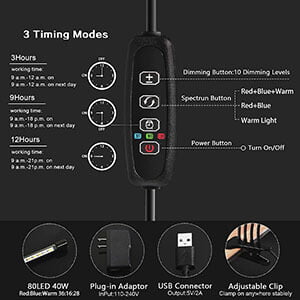
Rating: 4.8/5
4) Soltech Solutions Grow Light
Specifications:
- Dimension (inch): 13.57 x 3.57 x 5
- Light Source: LED
- Input Power: 20 watts
- Power Source: Corded Electric
- Features: Power performance, ideal full spectrum, and quality lights construction
This Soltech Solutions hanging grow light is as stylish and appealing as it is useful.
The 5.8 by 3.8-inch model comes in two sizes and has 2,000 lumens, while the 7 x 4-inch model has 4,000 lumens. Both have a decent quantity of natural light and are very strong.
I also appreciate that this lamp is modern and elegant and is offered in two colors—white and black—so that it will go with any decor.
Despite being one of the more expensive options, this hanging light should last longer than the alternatives.
When used for an average of 16 hours each day, the grow lamp’s manufacturer states that it can survive up to 15 years.
With great success, I tested this 20-watt lamp on an aloe plant. I observed many new growths arising after 3 weeks of use, which was far more than I had seen before the illumination.
Each piece comes with a DIY installation kit with a 15-foot fabric cable, three ceiling hooks, two wall fairleads, and a swag hook.
Despite the clear directions, I found the installation process quite difficult; it involved two persons, a ladder (since the ceiling installation required it), and a drill.
Despite its challenging installation, the Soltech Solutions Hanging Grow Light is functional and attractive.

PROS
- Minimalist style
- Equipment for installation is included
- 15-year lifespan
- Available in various sizes and hues

CONS
- Installation requires about one hour
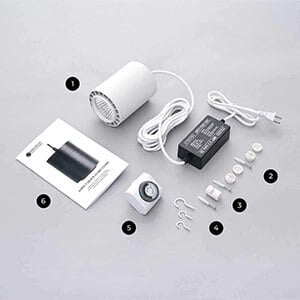
Rating: 4.8/5
5) Mars Hydro TS-1000 LED Grow Light
Specifications:
- Dimension (inch): 13.23 x 14.17 x 2.36
- Light Source: LED
- Input Power: 150W
- Power Source: Corded Electric
- Features: Low power consumption, dimming, and daisy chain grow light
The spread-style Mars Hydro TS-1000W LED grow light is a panel with 342 small LED grow lights.
With a PPFD of 743 micromole/m2/s at a distance of 18 inches, the Mars Hydro lamp requires just 150 watts of actual electricity.
Each stage of the growing process can promote plant growth by producing full-spectrum white light.
The grow lights can be dimmed and daisy-chained together using just one electrical outlet to link up to 15 units.
For the flowering stage, use a single lamp to cover 2.5 square feet; for the vegetative stage, use a single lamp to cover 3 square feet.
The Mars Hydro has no fan and runs quietly because it controls temperature internally.
Mars Hydro grow lights provide the ideal amount of light for the growth of cannabis and other plants. For a more detailed review of Mars Hydro Grow Lights, check this review out!

PROS
- 342 full-spectrum white light
- Minimal power draw
- Works silently
- It puts off less heat, but it’s the perfect amount.
- Energy efficient, very easy to set up, and works great.

CONS
- Requires installation

Rating: 4.8/5
6) GE LED Grow Light Bulb for Plants
Specifications:
- Dimension (inch): 4.06 x 4.06 x 5.94
- Light Source: LED
- Input Power: 9 watts
- Power Source: Electrical outlet
- Features: High Output PPF: 15 Micromoles Per Second, Advanced Light Spectrum
The GE BR30 is my choice for the best LED grow light overall.
This light offers a cutting-edge red spectrum ideal for flowering plants, fruit trees, and vegetables, including tomatoes, cucumbers, and peppers.
It readily plugs into most ordinary lamps with 120 volts, so you don’t need to run out and acquire any other equipment or supplies. Also, very little setup is needed.
However, to utilize it, you must have a lamp nearby or multiple LEDs if you want to use more than one bulb.
When I put this lamp to the test, I discovered that it produced a pleasant, warm glow without being as brightly lit as some alternatives.
However, the light was still bright enough to provide seedlings with what they required, and I saw rapid development within a few days.

PROS
- Affordable
- Most lamps will fit
- Luminous soft white light
- Easy to install
- It produces tangible and efficient outcomes.

CONS
- Requires a nearby lamp

Rating: 4.8/5
7) Feit Electric Dual Full LED Plant Grow Tube Light
Specifications:
- Dimension (inch): 4.9 x 23.3 x 1.73
- Light Source: LED
- Input Power: 19 watts
- Power Source: AC
- Features: No burning of leaves, 655 NM red spectrum, Rated for high humidity use, 450Nm blue spectrum
The Feit Electric, Dual Grow Tube Light, is intended to replace conventional greenhouse lighting and gives a full spectrum to help get the best results for a few plants and flowers.
It can be flush installed or hung against a ceiling or wall.
Thanks to the low heat output of energy-efficient LED lamps, you don’t have to be concerned about scorching your plants’ leaves.
The light bulbs’ optimal spectrum of 450 nm blue light and 655 nm red light promotes plant development and photosynthesis. At the same time, white light encompasses the entire color spectrum.
The LED light is simple to install and comes fully constructed for increased convenience.
The unit has two 6-inch hanging wire harnesses, a 5-foot power cord, and all required mounting hardware.
Some grow lights ceased working within a few months, despite the LED bulbs’ stated 25,000-hour lifespan.
Should it ever need to be replaced, this LED light is less expensive than some of the other choices in this compilation.

PROS
- Arrives fully put together
- Simple to install
- Fantastic blue: red ratio
- Low heat output
- Extremely light

CONS
- I may burn out in a few months
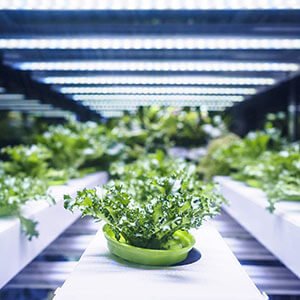
Rating: 4.8/5
8) Phlizon COB Series 2000W LED Plant Grow Light
Specifications:
- Dimension (inch): 3.1 x 12.2 x 21.26
- Light Source: LED
- Input Power: 2000 watts
- Power Source: Corded Electric
- Features: Full spectrum light
Full-spectrum white COB grow lights and colorful LEDs are combined in Phlizon’s COB Series 2000W LED Plant Grow Light to produce light frequencies for each growth stage.
The five grow lights in the series—1000w, 1500w, 2000w, 2500w, and 3000w—are priced similarly to other budget lights but perform better, mainly in terms of power and light spectrum.
Four COB grow lights make up the fixture, two of which have a warmer color temperature than the other. Besides, it has blue, purple, and red LEDs.
These grow lights have a PPFD of 2573 micromole/m2/s at 12 inches. Actual power consumption is 400 watts, and the maximum growth space is 4 square feet.
This COB model includes several settings, each designed to give your plants the right amount of light during their vegetative and flowering stages.
An adjustable ratchet hanger, a hanging kit, a power cord, grow glasses, and a thermometer and humidity monitor are included with the Phlizon COB lights at shipping.
They provide a 30-day money-back guarantee in addition to a 2-year manufacturing warranty.

PROS
- Includes multicolored LEDs and full-spectrum COB lighting
- Accessible in various light settings
- High PPFD
- They are just as good as “high-end” light fixtures
- Good light for small tents

CONS
- High energy consumption
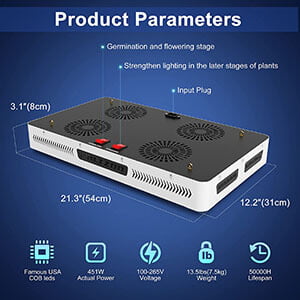
Rating: 4.8/5
9) Venoya 75W LED Grow Light for Indoor Plants
Specifications:
- Dimension (inch): 12.2 x 12.2 x 1.4
- Light Source: LED
- Input Power: 75 watts
- Power Source: AC
- Features: Full spectrum, energy-saving, and worry-free warranty
Because it emits light with a spectrum ranging from 380 nm to 730 nm, including UV, IR, red, and blue light, the Venoya LED Grow Light is an excellent choice for a full-spectrum hanging light.
It is both affordable and energy-efficient. The vegetative coverage of these lights is 2 x 2 ft.
This growing light may encourage even the most delicate tropical plants and flowers to thrive year-round and at all stages of growth, in addition to encouraging herbs and seedlings.
This grow light is potent without overheating at 75 watts.
A dowel, rod, hook, or S-hook can attach the portable Venoya Full Spectrum Grow Light’s four stainless steel wires.
Its lack of a timer could be a drawback because you must reach the LED light to switch it on or off. I like that it has a 12-month warranty in case of any problems.

PROS
- A variety of lights
- Fantastic for seedlings
- A 12-month guarantee
- Lightweight
- The appropriate degree of brightness

CONS
- No timer
- No on-and-off switch
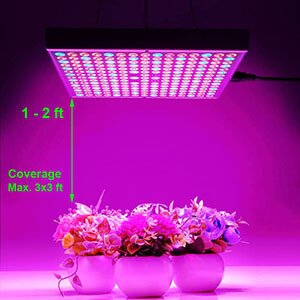
Rating: 4.8/5
10) Spider Farmer SF-4000 LED Grow Light
Specifications:
- Dimension (inch): 21.1 x 25.3 x 1.95
- Light Source: LED
- Input Power: 450 watts
- Power Source: Corded Electric
- Features: High Efficiency, Full Spectrum, Dimmable
The power provided by the Spider Farmer Light may be required by devoted home gardeners wishing to update their setup.
Although no LED light can completely replace the natural light, the full-spectrum lighting in this grow light gets close.
One unit may cover a sizable surface area because it is bigger than numerous grow lights.
The grow light includes daisy-chain functionality, allowing gardeners to connect multiple lights for an even bigger arrangement.
This SPIDER FARMER grow light is strong with a maximum PPFD of 2479 micromole/m2/s at a12 inches.
Yet, this added light intensity uses a lot of energy for an LED fixture, requiring 450 watts.
The ideal amount of light is provided by Spider Farmer grow lights for the growth of cannabis and other plants.
If you want to have a full-on review of Spider Farmer grow lights, you can check this review out for more details about it!

PROS
- Allows you to connect multiple lights
- Dynamism in performance
- Has daisy-chain capabilities
- Easy to set up
- Quality build and construction are great

CONS
- High energy consumption
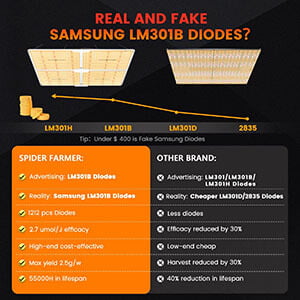
Rating: 4.8/5
What Are the Benefits of Using These LED Lights?
Grow lamps used to be large and awkward fluorescent tubes longer than a meter, requiring ugly systems of stands, cables, and reflectors, all of which came at a high cost.
They were bad for the environment and your energy bills because they used a lot of electricity.
Moreover, they produced a significant amount of heat, which created safety concerns and harmed the plants that were being cultivated.
Recent progress in LED technology has produced a new era of efficient, cool-running grow lights that are up to 90% more energy-efficient than older models and cost much less to buy and operate.
They have also shrunk in size, making it simple to fit them into the decor of the common home.
Some have been effortlessly incorporated into designs for planters and lamps. Also, there is mounting proof that LED lighting offers a much higher yield than conventional illumination.
Here are more advantages of LED grow lights:
Long Life
The lifespan is crucial in environments where continuous lighting is required to ensure that plants may grow and flourish appropriately.
Of course, a long lifespan also enables less frequent maintenance, which saves time and money.
Due to their excellent efficiency and minimal energy use, LED lights typically last 10 to 20 years longer than conventional types of lighting.
Targeted Wavelengths
The environment must be precisely controlled in a greenhouse for plants to thrive.
Essentially, they must develop in conditions that allow photosynthesis to occur as naturally as possible. It also enables less frequent maintenance, which saves time and money.
Plants absorb chlorophyll most when exposed to red and blue lighting colors and are more sensitive to specific light wavelengths.
Chlorophyll absorbs light most efficiently between 400 and 500 nm and between 600 and 700 nm, making it hard to use typical HPS lighting because most of its output falls outside these ranges.
On the other hand, LED growth lights can employ specific spectra to match these peak absorption ranges.
Power Savings
Energy use can be reduced by up to 75% compared to regular lighting. It translates into cost savings, higher effectiveness, and better environmental outcomes.
Lower Heat
They produce significantly less heat than other lighting options, so LED lights outperform them.
It is essential for plant growth since excessive heat can harm plants severely, stunting their growth and frequently shortening their lifespan.
Adaptable Design
Compared to previous lighting options, LED lighting has the advantage of being more adaptable in design and technology.
It is crucial for greenhouse lighting since numerous strategies and configurations can be used to provide the plants with the best possible illumination.Read my post on the top humidifiers for grow tents for advice on keeping the ideal humidity level in your grow tent.
What Are the Different Types of LED Grow Lights?
There are several different types of LED grow lights. Choosing a good variety for your indoor garden can be made easier by learning about the most well-liked ones.
Spread-Style
Spread-style LED lights are good at illuminating many plants since they contain numerous little individual lights dispersed across their full surface area.
Spread lights can be divided into two main subcategories: spider-style and quantum board.
- Quantum board lights use numerous tiny LED grow lights dispersed throughout a sizable, flat surface area. They employ passive cooling and full-spectrum white LEDs, allowing the plants to be placed directly beneath them without fear of overheating.
- Spider-style lights include numerous LEDs on short “arms” with an open bar design rather than solid board lights. Usually more expensive than quantum board lighting.
Chip on Board (COB)
COB lights are made up of several tiny LEDs on a single chip, resulting in a single powerful light point.
While COB lights provide optimal lighting in the center of the area they cover, they do not provide the same widespread, equal coverage as spread-style LEDs.
Because they are so powerful, COB lights frequently produce more heat than other types of LEDs and may necessitate the use of fans to keep the area cool.
They use full-spectrum white LEDs and deeper canopy penetration than spread-style LEDs.
Traditional
Traditional LED growth lamps are a great option for tiny places because they are often compact and small.
They use medium-power LEDs and, unlike white LEDs, typically use multicolored LEDs that cover the entire spectrum of color frequencies.
It gives their light a colorful appearance, which indoor growers may or may not appreciate.
Features to Look for When Choosing the Best LED Grow Light
You might not be familiar with some of the distinctive qualities of LED lighting if you’re new to growing cannabis indoors or using LED plant lights.
The following are the key aspects to consider when buying LED grow lights for your cannabis growth.
There is no particular sequence to the factors given. Given your unique situation as a growing person, only you can determine which is most important to you.
Light Spectrum
Natural sunlight contains all of the electromagnetic spectrum’s colors.
Unlike certain LED lights, which can only reproduce a limited range of color frequencies, full-spectrum white LED lights offer all the colors needed for every stage of the growing process.
- Early in a plant’s life, blue light aids in its growth. It is the first hue that plants in their vegetative state may absorb.
- Purple light is also utilized in the vegetative state, but it is less useful for photosynthesis than blue light.
- For buds to flower, red light is crucial in the last phases of growth.
- All the hues in the color spectrum are present in white light. It can be useful for all developmental stages when used alone.
The visible wavelengths enjoyed by plant leaves are used by chlorophyll to produce food. The exception is the green glow.
Plants’ leaves are green because chlorophyll only reflects green light; they do not absorb it.
Size and Shape of Grow Space
Consider how many plants you need to cover and where you plan to place them when determining the size of grow light you require.
Choose a lighter, more portable option to transfer your grow light from location to location. It might not matter as much if you know it will remain in place.
Make sure it has enough space to function properly and is not too close to any furniture, drapes, or other objects wherever you place it.
Strength and Function of Grow Light
The light intensity and function of your grow light are the next two factors you need to consider.
Make sure your grow lamp is powerful enough to give your cannabis plants the appropriate quantity of light by paying attention to its light intensity.
Wattage and the amount of light that reaches the plant canopy are two factors to consider. Identifying the primary usage for a grow light is known as determining its purpose.
Many folks only want a grow light for their mother plants or seedlings. Others are looking for the finest LED grow light to support all plant life cycles.
Performance vs. Value for Money
Select a grow lamp that is priced for performance or value.
The third criterion will allow you to cut through the voluminous selection of LED grow lights for cannabis cultivation that is now accessible.
Although it won’t be the most affordable grow light, bang for the buck doesn’t necessarily equal the cheapest.
When compared to premium, high-performance grow light manufacturers like HLG or Gavita, brands like Viparspectra, Mars Hydro, and AC Infinity offer good value for the money.
What distinguishes high-end LED grow lights from cheap grow lights? The difference is primarily in the components’ quality.
Some more expensive models also come with great extras but are not essential for success, like UV diodes, which the less expensive models won’t have.
A boutique brand that lacks the massive manufacturing capacity of the more value-focused firms may also cost you a little bit more.
In case you’re interested, I’ve talked to owners of both types of grow lights which are content with their harvests.
Selecting the factors above that fit your demands is the secret to choosing the finest LED to grow light for cannabis cultivation!
Type
Grow lights come in various forms, from panels to items that dangle from ceilings or screw into regular light fixtures.
You can reduce your options by considering the sort of plants you have, the amount of natural light that is already present, and where your plants are positioned.
Generally, desktop lights are smaller and easier to move around than hanging lights.
If you desire a comprehensive lighting system, think about purchasing a garden kit that includes a planter with an integrated light.
Location
Hanging your lights too low might burn your plants while hanging them too high can leave them reaching for the light and feeble.”
The recommended distance from plants for incandescent grow lights is at least 24 inches.
Fluorescent and LED lights can be placed 12 to 18 inches away from plants due to their lower heat outputs. However, various plants require varying levels of light.
It is advised to place seedlings as close to a fluorescent light source as they can get without touching it, which is about 2 to 3 inches away.
The ideal setup simulates natural sunlight and ensures the entire plant receives enough light by hanging or placing lamps directly over plants.
Wattage
A grow light’s wattage determines how much light it produces.
Most low-light plants, especially herbs, may thrive with a lower-watt bulb because you typically require 32 watts per square foot.
PPFD, or photosynthetic photon flux density, is a more important statistic for determining a lamp’s specific light production. Yet, not all products include this information.
Bulb Type
One of the most widely used and effective solutions is LED lighting.
They provide balanced light spectrum ranges as well. LED lights are my favorite go-to for lights because they’re energy-efficient and generate little to no heat.
LED lights’ lifespan is up to 30 times longer than that of incandescent bulbs. Although fluorescent lights are more expensive than incandescent bulbs, they are more energy-efficient.
Even though incandescent bulbs are the cheapest option, they also use the least energy. Also, they produce a great amount of heat, which is not the best environment for development.
Growing Season
Herbs, seeds, houseplants, and flowers can thrive all year round under indoor grow lights, which is one of their best features.
Yet, they require the proper ratio of darkness and light to survive.
For seedling germination and growth, until they are a few inches tall, running lights should be used for 16 to 18 hours each day.
Before transplanting them in the spring, you can gradually reduce them as they age to get them on a similar light pattern.
Controlling the ideal light levels is simple with a grow lamp with a built-in timer, especially if you’re not at home.
After some experimentation, you should be able to pin down the best length for your particular plant kind.
You are matching the light schedule as closely as possible to the present sun pattern to prevent shock in your plants when moving outside.
Connectivity
Products having this feature plug into each other and then plug into one outlet, reducing the number of cables needed for setup.
Many LED grow lights are designed to link to other units to cover bigger areas, generally referred to as “daisy-chain connectivity.”
Tips for Maximizing the Performance of Any Full Spectrum Led Grow Light
Here’re the best tips to use:
- Most LED Grow lights recommend PH values of 5.7 to 6.0 for hydro and 6.0 to 6.5 for soil.
- In your grow area, keep the humidity level between 50 and 70%.
- To prevent any hazards or failures, keep the voltage steady.
- Whenever you come into contact with grow lights, always wear sunglasses.
- To save even more electricity, choose a timer whenever a grow light can be controlled by one.
- It doesn’t necessarily indicate that an LED is defective if it contains IR and UV features and the LED that appears unusually faint.
- Always keep your grow panel away from dangerous substances like acid or sulfur.
- The ideal distance for any grow light is 22–24 inches during veg and 18–20 inches during bloom. It varies, though, depending on the manufacturer and light quality.
- Always give a product a few hours of rest, regardless of its durability. Rest assured that your grow light operates as reliably as possible.
- Maintain a secure environment for your plants and yourself.
Frequently Asked Questions (FAQs)
Here are some responses to some often-asked queries about LED plant lights for readers who may still have them.
What Wattage Is Best for Grow Lights?
Aim for 20 to 40 watts per square foot as a general guideline. Divide the wattage of your LED bulb by 20 (400 watts divided by 20 is 20), then by 40 (400 divided by 40 equals 10).
How Many LED Lights Do I Need for 4 Plants?
You can light four plants using a 32-watt LED grow lamp. The same 32-watt grow light can illuminate one plant in a Sea of Green.
On the other hand, low-stress training requires at least two square feet of grow room. Therefore, 32 watts of light intensity won’t be adequate.
Is the ViparSpectra Led Grow Light Reliable?
Many modest and price-conscious growers are initially drawn to them because of their quick customer service and lengthy warranty and return periods.
These justify why the Viparspectra LED grow light is a fantastic investment and safe choice if you’re getting into hydroponics or indoor farming.
What LED Lights Do Professional Growers Use?
Cheap LED growth lights won’t deliver the same results as those employed by expert gardeners.
Although the market is changing to favor LEDs, professionals often utilize fluorescent or high-intensity discharge lights (HID).
LEDs are preferable for home use due to their energy efficiency.
Summary
My top three selections for the best LED grow lights in terms of price, value for money and overall quality are as follows:
Best Budget: LEOTER Grow Light for Indoor Plants
Specifications:
- Dimension (inch): 13.66 x 5.87 x 3.35
- Light Source: LED
- Input Power: 40 Watts
- Power Source: AC
- Features: Best Red/Blue/Yellow Spectrum LED Combination
These grow lights are just insane. They look stunning and perform well, which truly captured my attention.
The timer is very simple and simultaneously turns on and off daily.
Changing the colors or brightness is equally simple. In my experience, plants respond best to the full spectrum LED grow light.
Thanks to these lights, my plant babies will make it through the winter. One of the top cheap LED grow lights on the market!
Best Value: Horticulture Lighting Group (HLG) Blackbird
Specifications:
- Dimension (inch): 26 x 26.75 x 2.75
- Light Source: LED
- Input Power: 100 – 600 watts
- Power Source: Corded Electric
- Features: High efficiency and dimmable
This item was expertly constructed in the USA. Plus, you may attach HLG’s 2-foot UVA bar to the Blackbird by utilizing the driver bolts.
My plants love the lights even though I’ve only had them for a short while.
Because of how even the light distribution is over the canopy, I would recommend them. I liked how this lamp was already put together.
It is sturdy and well-built. Dimming ranges from 0% to 100%. It is, in my opinion, the ideal lighting for a 4×4 tent. I heartily endorse this lamp! Eager to begin growing under it!
Best Overall: GE LED Grow Light Bulb for Plants
Specifications:
- Dimension (inch): 4.06 x 4.06 x 5.94
- Light Source: LED
- Input Power: 9 watts
- Power Source: Electrical outlet
- Features: High Output PPF: 15 Micromoles Per Second, Advanced Light Spectrum
The GE BR30 is my choice for the best LED grow light overall. I’ve used a lot of lights, but these are the most practical simple bulbs I’ve found.
Excellent sustainability and even increase have been observed. It seems to emit the proper light because the plants appear better than they would otherwise.
However, it’s also possible that the color influences how healthy and green the plants look. My plants appear to enjoy this light and are flourishing in it.
Since it is LED, this best LED grow light should last long and save money and energy.
Conclusion
It isn’t easy to find the best LED grow lights available. It requires endless hours of research and comparison, which I have gladly and meticulously finished at your convenience.
In conclusion, I am positive that the grow lights I stated above are the best available. Select the best LED grow lights that work for you, and be assured that your purchase is wise.
When buying LED grow lights, the finest ones won’t always be the most expensive option, but LEDs will at least be a little more expensive than other plant lighting options.
Spend a bit more for a significant improvement in efficiency and light spectrum. You might not be prepared to switch to LEDs if you are unwilling to accomplish it.
Happy growing up, and good luck!




